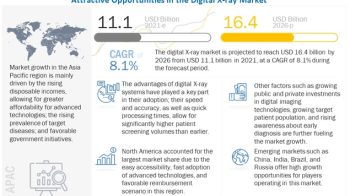Overview of This Study:
The study involved four major activities to estimate the current size of the intraoperative imaging market. Exhaustive secondary research was carried out to collect information on the market and its different subsegments.
The next step was to validate these findings, assumptions, and sizing with industry experts across the value chain through primary research. Top-down and bottom-up approaches were employed to estimate the complete market size. Thereafter, market breakdown and data triangulation procedures were used to estimate the size of segments and subsegments.
Projected Growth in Revenue Generation:
The global intraoperative imaging market size is projected to reach USD 2.5 billion by 2025 from USD 1.9 billion in 2020, at a CAGR of 5.2% during the forecast period.
Major Growth Boosting Factors:
The global intraoperative imaging market offers significant growth potential for prominent as well as emerging product manufacturers. Technological advancements, rising incidence of surgeries and increased funding and public-private investments are some of the key factors driving the growth of the intraoperative imaging market.
Download PDF Brochure@ https://www.marketsandmarkets.com/pdfdownloadNew.asp?id=94836651
Driver: Technological advancements in intraoperative imaging modalities
Over the past decade, the medical device sector has witnessed significant transformations and technological advancements in intraoperative imaging, including the emergence of focused imaging technologies and portable/handheld/smartphone-based intraoperative imaging devices. Technologically advanced intraoperative imaging systems offer faster results, higher image quality, easier operations, and simplified consoles as compared to traditional imaging devices.
The key players in the intraoperative imaging market are increasingly focusing on launching novel technologically advanced products. Innovation in this market focuses on developing economical, technologically advanced, and easy-to-use intraoperative imaging systems. An important technological advancement is a reduction in the noise/sound produced by intraoperative imaging systems. Key players have continually produced devices that produce far less sound. Such advancements focus on improving the functionality of intraoperative imaging systems and on expanding their application areas, thereby driving the demand for these systems among end users
Restraint: High cost of intraoperative imaging systems
Intraoperative imaging systems are priced at a premium and require high investments for installations, increasing the procedural cost for patients. This affects the adoption rate of new systems, especially in emerging countries; most healthcare facilities in these countries, consequently, cannot afford such systems.
Healthcare facilities that purchase such costly systems often depend on third-party payers (such as Medicare, Medicaid, or private health insurance plans) to reimburse costs incurred in screening and therapeutic procedures performed using these systems. As a result, factors such as continuous cuts in reimbursements for intraoperative imaging scans and the increasing cost of intraoperative imaging systems prevent medium-sized and small healthcare facilities from investing in advanced intraoperative imaging modalities.
Opportunity: High growth opportunities in emerging countries
Developing economies such as India, China, Brazil, South Korea, Turkey, Russia, and South Africa offer high growth opportunities for the major players in the intraoperative imaging market. Although the cost factor is a concern in these developing countries, their huge population base—especially in India and China—indicates a sustainable market for intraoperative imaging devices.
The higher incidence of chronic diseases such as cancer, stroke, and neUrological Surgery and cardiovascular diseases, as well as the higher death rates in these countries, showcase the need for early detection. For instance, GLOBOCAN 2018 data estimated that roughly over 50% of the global cancer population lived in developing regions. In addition, regulatory policies are more adaptive and business-friendly in the Asia Pacific than in western countries. Increasing competition in mature markets is expected to compel intraoperative imaging system manufacturers to focus on emerging markets.
Request Sample Pages@ https://www.marketsandmarkets.com/requestsampleNew.asp?id=94836651
Challenge: Hospital budget cuts
In response to increasing government pressure to reduce healthcare costs, several healthcare providers have aligned themselves with group purchasing organizations (GPOs), integrated health networks (IHNs), and integrated delivery networks (IDNs). These organizations aggregate their members’ purchases and bargain for a competitive price with the suppliers and manufacturers of medical devices. GPOs, IHNs, and IDNs negotiate heavily for the bulk purchases of intraoperative imaging devices. The rising cost of prescription drugs and a sharp decline in the proposed budget allocations for Health and Human Services in the US, as of 2019, have significantly reduced hospital budgets. A study by the American Hospital Association estimated that federal payment cuts to hospitals would amount to USD 218 billion by 2028, forcing hospitals to allocate smaller budgets annually.


